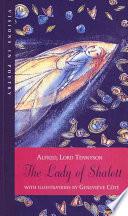Pt. III, st. 5
The Lady of Shalott (1832)
Context: She left the web, she left the loom,
She made three paces through the room,
She saw the water-lily bloom,
She saw the helmet and the plume,
She looked down to Camelot.
Out flew the web and floated wide;
The mirror cracked from side to side;
"The curse is come upon me," cried
The Lady of Shalott.
Quotes from work
The Lady of Shalott

"The Lady of Shalott" is a lyrical ballad by the English poet Alfred Tennyson. Based on the medieval Donna di Scalotta, it tells the story of Elaine of Astolat, a young noblewoman imprisoned in a tower on an island near Camelot. One of the poet's best-known works, its vivid medieval romanticism and enigmatic symbolism inspired many painters, especially the Pre-Raphaelites and their followers.
“The mirror cracked from side to side;
"The curse is come upon me," cried
The Lady of Shalott.”
Pt. III, st. 5
The Lady of Shalott (1832)
Context: She left the web, she left the loom,
She made three paces through the room,
She saw the water-lily bloom,
She saw the helmet and the plume,
She looked down to Camelot.
Out flew the web and floated wide;
The mirror cracked from side to side;
"The curse is come upon me," cried
The Lady of Shalott.
The Lady of Shalott (1832)
Context: p>Lying, robed in snowy white
That loosely flew to left and right —
The leaves upon her falling light —
Thro' the noises of the night,
She floated down to Camelot:
And as the boat-head wound along
The willowy hills and fields among,
They heard her singing her last song,
The Lady of Shalott.Heard a carol, mournful, holy,
Chanted loudly, chanted lowly,
Till her blood was frozen slowly,
And her eyes were darkened wholly,
Turn'd to tower'd Camelot.
For ere she reach'd upon the tide
The first house by the water-side,
Singing in her song she died,
The Lady of Shalott.</p